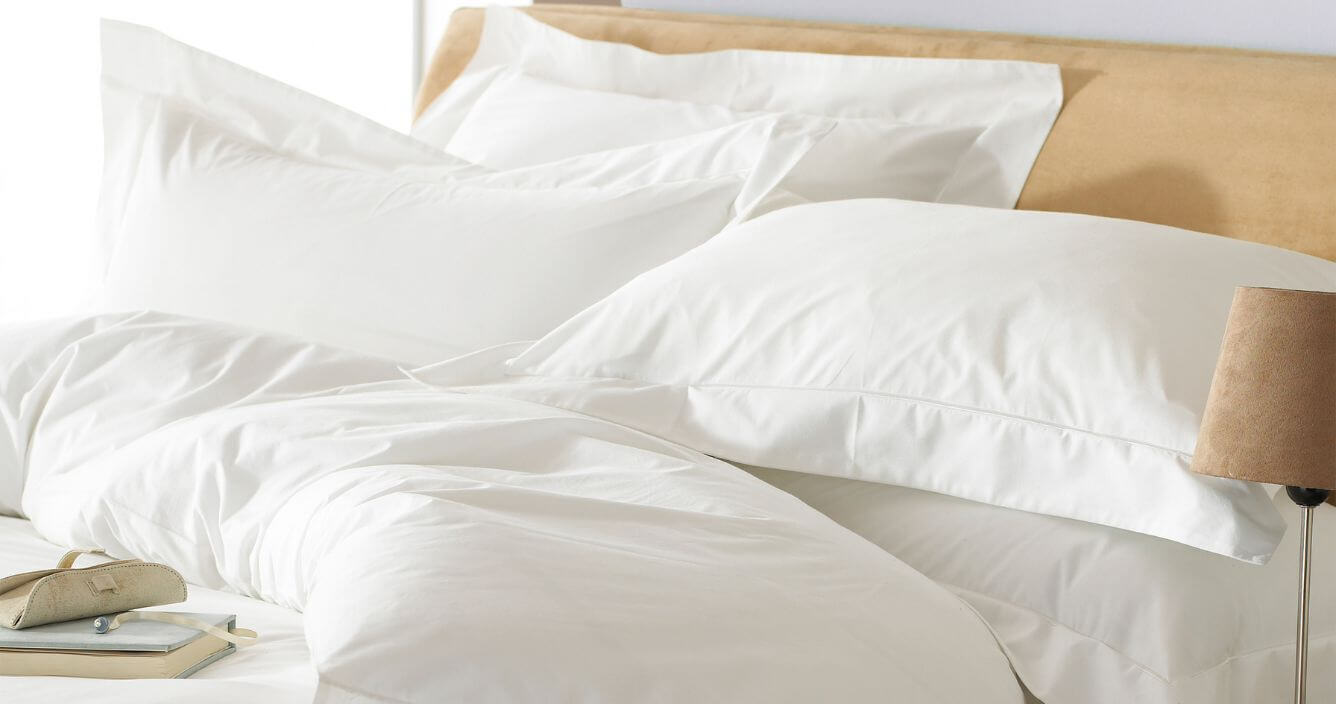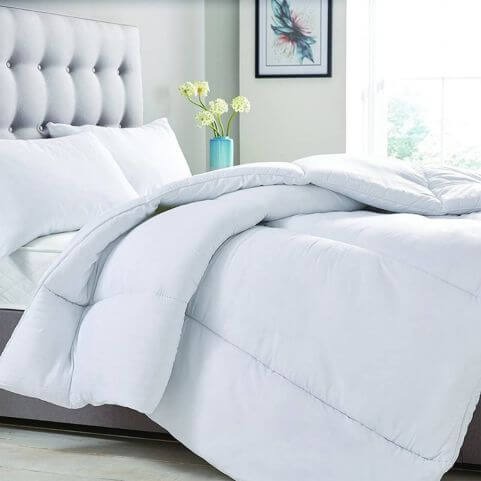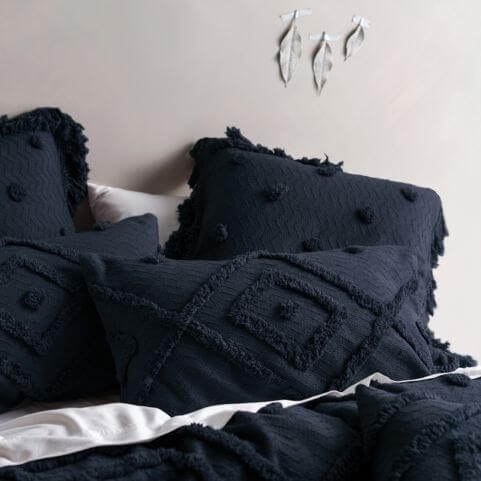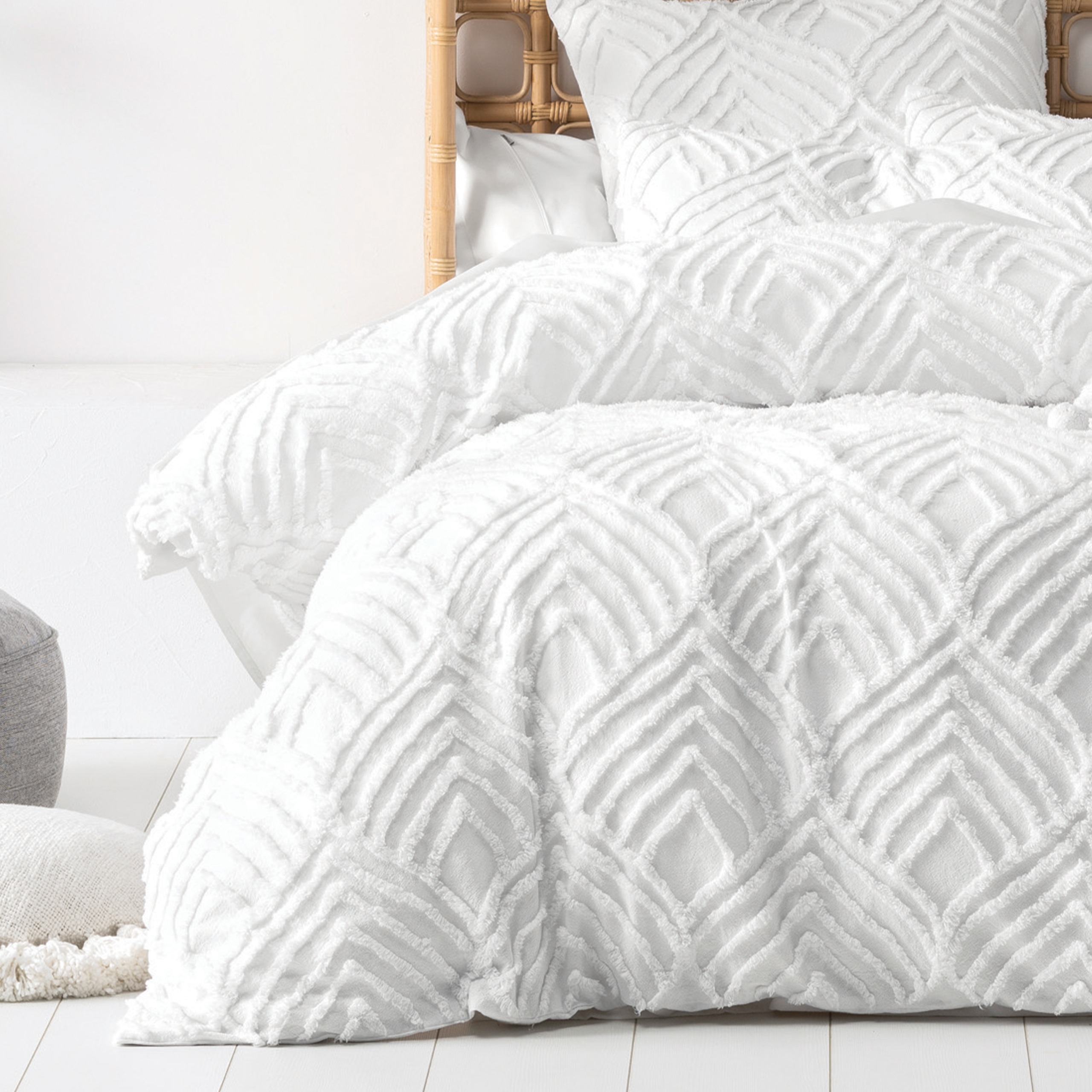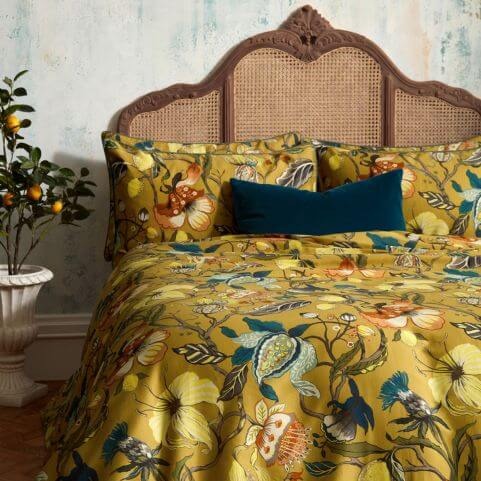we've tied up all the loose threads in our definitive guide.
If you’re searching for the perfect set of sheets to take your sleep sanctuary’s comfort to the next level – you’ve probably already come across the term ‘thread count’. With the extreme emphasis people seem to place on it, you’d be forgiven for thinking thread count is the be-all and end-all of bedding. The short answer? Thread count is not the ultimate measure of high-quality bed sheets, and it certainly isn’t the only factor you should be considering.
So, just what does thread count mean in bedding, and how much attention (if any) should you be giving it? We’re wading through the thread count tall-tales, misconceptions and more – bringing you all the insider knowledge on achieving ultimate bedding bliss.
‘Thread count’ is simply the number of threads in a square inch of fabric. It’s found by counting the number of horizontal threads (known as the weft) and vertical threads (the warp) within a square inch of fabric, and adding these numbers together. For example, a sheet with 125 weft threads and 125 warp threads will have a thread count of 250.
This number essentially measures how tightly woven a fabric is – the higher the thread count, the more threads the manufacturer has packed into that square inch. The implication is that the higher the thread count, the finer the yarns must be, and the fabric will be softer and more durable as a result. However, this isn’t always the case.
The truth is that thread count only really applies to 100% cotton sheets. When used for any other fabric, it’s potentially misleading.
No, not necessarily. Many elements go into making high-quality bedding, and vital factors like softness, comfort and breathability fade into the background when thread count is given too much emphasis. Sure, a high thread count can be a sign of quality, but aim too high and you might end up paying over the odds, when a lower thread count would have given you the same level of comfort.
"Thread count essentially measures how tightly woven a fabric is" explains Suzi, design manager and interiors expert at furn.com. "While it can be a good indicator of quality and comfort for cotton sheets, it certainly isn't the be-all and end-all".
A 1000-thread count fabric might be very tightly woven, but it most likely won't be any different to a similar fabric with half the number of threads. The type of weave has an impact, too. Cotton percale is made with a one over, one under weave, while sateen is woven four over, one under. As sateen has more threads on the fabric surface, it tends to have a smoother, glossier feel.
Thread count can be manipulated for marketing reasons, and isn’t always the most trustworthy measure of a fabric’s quality. Polyester sheets, for example, can be advertised as having thread counts in the thousands. This is because polyester threads are often manufactured to be super thin – so while their high thread count might sound impressive, it doesn’t mean that the fabric quality is any better (but you’ll certainly end up paying more for it!)
The best thread count for bedding all depends on the fabric you’re working with. Generally, a good cotton thread count can range from 200-600, with percale sheets coming in at 200-400, and sateen weaves going up to 600.
"While it depends massively on the quality of the fabric, I tend to stick with a thread count somewhere in the 200-600 range" Suzi advises. "200-300 is optimal for percale cotton, while high quality sateen sheets can range anywhere from 300 to 600".
However, judging by thread count alone doesn’t guarantee softer sheets. Both the quality of the cotton and the type of weave are just as important (if not more) and will give you a much better idea of whether or not you should commit to buying.
"While some retailers would have you believe that a higher thread count always equals higher quality sheets, things are rarely that simple" explains Suzi. "As a measure of how many threads are packed into one square inch of fabric, exceptionally high thread counts can result in heavy, stifling sheets that don't allow air to circulate".
For the best quality cotton bedding, look for sheets labelled as containing 100% cotton or Egyptian cotton. Both are woven with fine, high-quality yarns that will make a noticeable difference to the softness of your sheets. If durability is more your thing, polycotton blends offer a hard-wearing, comfortable weave that’ll survive for years, even in the busiest of homes.
The type of weave used in a fabric can be just as important, and should never be overlooked in your search for sumptuously soft bedding. Percale cotton weaves are crisp and cool with a comfortable matte finish – think heavenly hotel bedding – whereas cotton sateen is smooth and glossy. There are other finishes like brushed cotton, which is super cosy, textured, and perfect for snuggling up in on those chilly winter mornings.
Want to maximise your sleep quality and gain some useful knowledge in the process? Take a look at our bedding buying guide for a wealth of helpful tips – from the bedding basics to sizing, fabrics, weaves, styling and more.
Thread count only counts when you’re looking at 100% cotton with single-ply weaves. Anything else and it’s probably not the whole truth. Here are some things to look out for:
Multi-ply
If the fabric you’re looking at uses multi-ply threads, then the thread count might have been fudged – especially if it looks particularly high. Some sneaky marketers like to inflate the thread count by counting 2-ply threads as two threads, and 3-ply as three, etc.
Polyester or blended fabrics
As we mentioned before, polyester sheets can be manufactured to make the thread count sound good – but it doesn’t necessarily have a positive impact on the quality of the fabric.
Linen
If you’re looking for a linen sheet, you likely won’t find a thread count on it. Linen uses a thicker thread, so it naturally has a lesser thread count – but certainly doesn’t make for a lesser night’s sleep!
